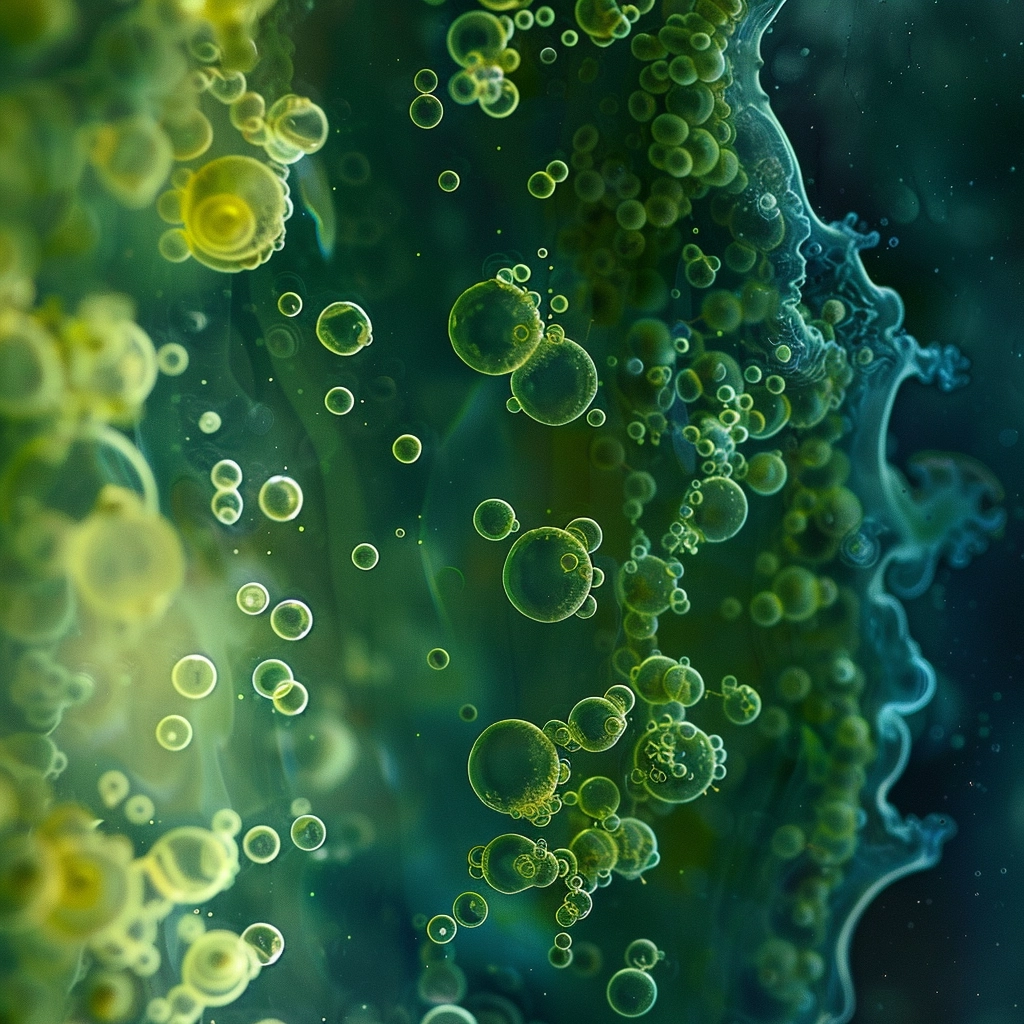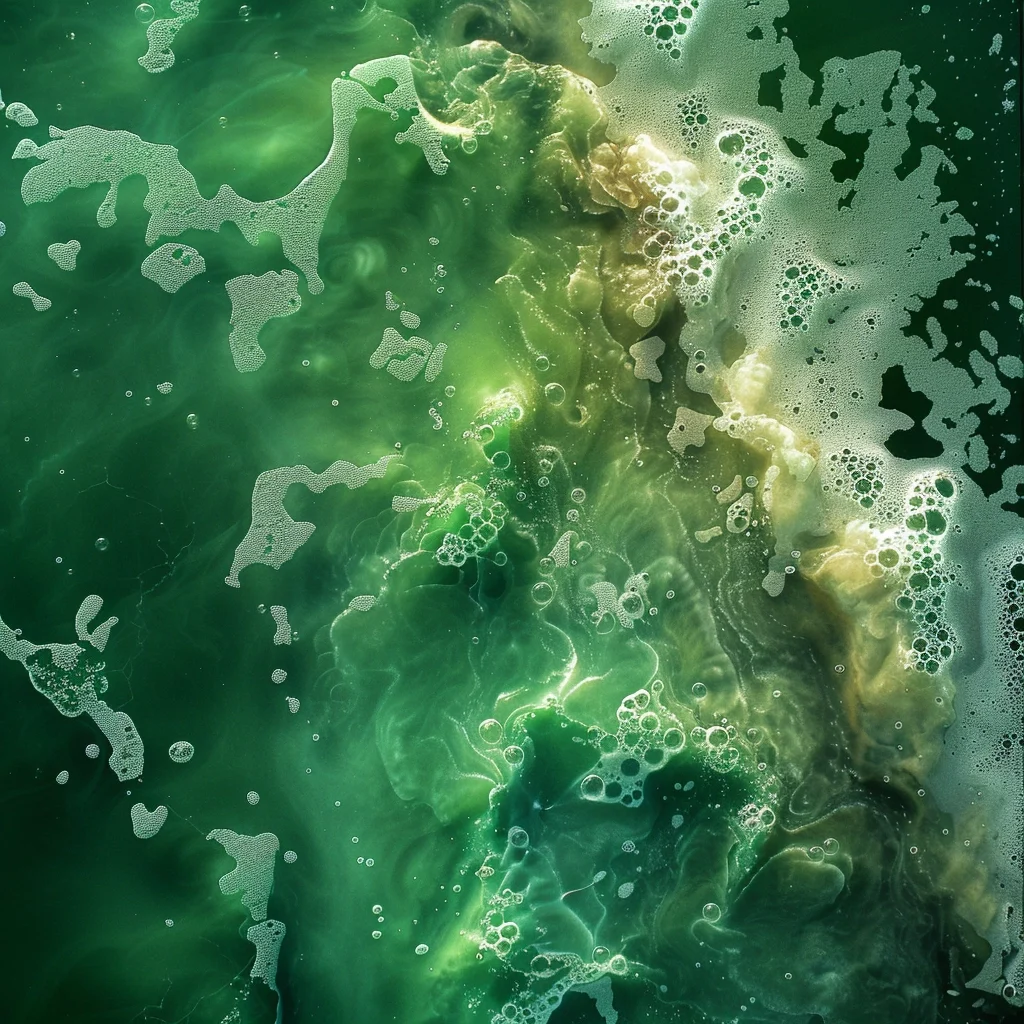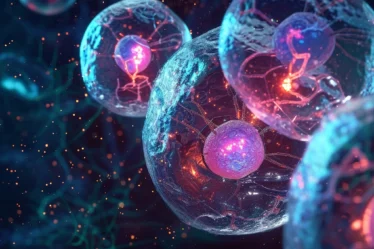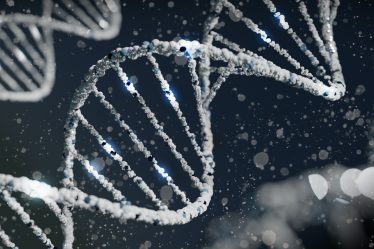
Cyanobacteria, commonly known as blue-green algae, are fascinating bacteria that harness photosynthesis to produce energy. This blog will teach you about their unique characteristics, structure, and photosynthetic capabilities.
We’ll explore the different types of cyanobacteria, from unicellular to filamentous forms, and their roles in aquatic and terrestrial environments. Additionally, we’ll discuss the ecological impacts of cyanobacteria, such as their ability to fix nitrogen and their involvement in harmful algal blooms. Join us to uncover the significance of these ancient organisms in today’s ecosystems.
Cyanobacteria or Blue-Green Algae: Key Takeaways
In a hurry? Don’t worry. Our critical takeaways on cyanobacteria will give you a quick and easy summary of the main points:
🟠 Cyanobacteria, or blue-green algae, contribute to nitrogen fixation and oxygen production across various ecosystems.
🟠 Cyanobacteria appear in unicellular, filamentous, or colonial forms and inhabit aquatic and terrestrial environments.
🟠 We must effectively manage cyanobacteria to prevent harmful algal blooms that degrade water quality and harm aquatic life.
If you find blue-green algae challenging, don’t worry! Personalized tutoring or interactive biology lessons make these concepts more straightforward. Explore more biology topics and broaden your knowledge with our free Biology blogs.
What Are Cyanobacteria or Blue-Green Algae?
Cyanobacteria, commonly known as blue-green algae, belong to a group of bacteria that harness photosynthesis to produce energy. Despite their algae-like appearance, they are actually bacteria and possess characteristics typical of bacterial organisms. Their distinctive greenish-blue color stems from chlorophyll a, the same pigment plants use to capture light energy.
Cyanobacteria are some of the oldest life forms on Earth, with fossil records dating back over 2.5 billion years. They were crucial in developing the Earth’s atmosphere and supporting the evolution of other life forms by significantly contributing to the planet’s oxygen levels. These organisms thrive in diverse habitats, ranging from oceans and freshwater lakes to damp soils and desert crusts, establishing them as one of the most widespread life forms on the planet.
Key Features of Cyanobacteria, Photosynthetic Algae
Physical and Biological Characteristics of Cyanobacteria
Cyanobacteria are prokaryotes that lack a membrane-bound nucleus and other organelles typical of eukaryotic cells. Their cellular structure is relatively simple, with all life processes occurring within the cytoplasm or at the cell membrane. Cyanobacteria are unique among bacteria because they have internal membranes that house photosynthetic pigments, allowing them to capture light energy efficiently. These membranes are analogous to the thylakoid membranes found in plant chloroplasts.
The critical photosynthetic pigment in cyanobacteria is chlorophyll a, which is responsible for their ability to perform oxygenic photosynthesis, just like plants. In addition to chlorophyll a, cyanobacteria also produce various other pigments, including:
- Phycobilins: Water-soluble pigments found in the light-harvesting phycobilisomes.
- Carotenoids: Pigments that protect chlorophyll from intense light and play a role in photosynthesis.
These pigments facilitate photosynthesis and give cyanobacteria their characteristic blue-green color. However, some species may appear green, brown, or even red due to additional pigments.
Photosynthesis and Pigmentation of Blue-Green Algae
Cyanobacteria use sunlight to produce energy through oxygenic photosynthesis, the same method plants and algae use. This process involves using light energy to convert water and carbon dioxide into glucose and oxygen. The primary steps of photosynthesis in cyanobacteria occur within the thylakoid membranes, where chlorophyll absorbs light. The light energy is then converted into chemical energy, which is used to fix carbon dioxide into organic compounds.
The roles of different pigments in cyanobacteria are:
- Chlorophyll a: The primary pigment responsible for capturing light energy.
- Phycobilins: These pigments, which include phycoerythrin and phycocyanin, capture wavelengths of light that chlorophyll does not absorb effectively, particularly in deeper or shaded waters.
- Carotenoids: These assist in photosynthesis by protecting the photosynthetic apparatus from oxidative damage and also absorb light energy, which they pass to chlorophyll a.
Cyanobacteria can thrive in various environments due to the diversity in their pigment composition. They contain different pigments essential for capturing energy for photosynthesis, making them highly adaptable to their surroundings. As a result, cyanobacteria can be found in illuminated environments all over the earth, ranging from hot springs to icy waters. This adaptation demonstrates how crucial each pigment is for optimizing energy capture in different light conditions and depths.
Are you finding blue-green algae intricate? A biology tutor can offer personalized lessons that cater to your learning style, making complex biological processes accessible and engaging.
Different Habitats and Types of Cyanobacteria
Cyanobacteria are diverse organisms that populate various environments, adapting to extreme variations in conditions. They exist in saltwater oceans, freshwater lakes, hot springs, and arid deserts. This adaptability is reflected in their various forms, from single-celled varieties to complex, filamentous chains that can form expansive blooms.
All cyanobacteria perform essential ecological functions, such as oxygen production and nitrogen fixation, impacting their ecosystems by supporting food webs and nutrient cycles.
1. Unicellular and Colonial Cyanobacteria
Cyanobacteria exhibit many morphological forms, from simple unicellular types to complex colonial structures. Unicellular cyanobacteria are the most basic form, consisting of single cells that sometimes group to form colonies. These colonies can vary significantly in shape and size and float freely in various aquatic environments. Typical habitats for unicellular and colonial cyanobacteria include freshwater and marine ecosystems, where they contribute significantly to the microbial population and serve as primary producers in the food chain.
Unicellular cyanobacteria are particularly prevalent in nutrient-rich waters, where they can form large blooms. Some of these blooms can be visible from the surface as green or blue-green layers on the water, where their common name “blue-green algae” comes from. Despite their simple structure, unicellular cyanobacteria are highly efficient at photosynthesis. They can adapt to various light conditions, making them versatile inhabitants of well-lit surface waters and more shaded environments.
2. Filamentous Cyanobacteria
Filamentous cyanobacteria represent a more complex organization. Cells are joined end to end to form long, thread-like structures known as filaments. These filaments can be straightforward chains of cells or may differentiate into specialized cells, such as heterocysts and akinetes.
Heterocysts are thick-walled cells that provide an anaerobic environment necessary for nitrogen fixation—a process crucial for converting atmospheric nitrogen into a form usable by living organisms. Akinetes are spore-like cells that survive under unfavorable conditions.
The ecological roles of filamentous cyanobacteria are diverse. They often form the foundation of microbial mats in various aquatic environments, from the benthic zones of lakes and ponds to the surfaces of rocks and sediments in marine settings. Filamentous types are essential in ecosystems where they stabilize sediment surfaces, prevent erosion, and contribute to the nitrogen economy of the habitat through their nitrogen-fixing capabilities.
These cyanobacteria are vital for nutrient cycling in aquatic ecosystems and create habitats for other microorganisms by forming biofilms and mats that provide shelter and nutrients. Their ability to fix nitrogen makes them an essential part of the ecological community, especially in nutrient-poor environments where they can convert inert atmospheric nitrogen into a form accessible to other life forms.
Curious about chemistry in daily life? Explore our simple experiments you can do at home!
Cyanobacteria in Ecosystems
Cyanobacteria Roles in Aquatic Ecosystems
In both freshwater and marine systems, you’ll find cyanobacteria performing essential ecological functions such as:
- Oxygen Production: Through photosynthesis, cyanobacteria produce oxygen, which is vital for sustaining aquatic life.
- Nitrogen Fixation: They convert atmospheric nitrogen into forms that other organisms can use, enriching the nutrient dynamics of their habitats.
- Supporting Food Webs: Cyanobacteria are a primary food source for a wide range of aquatic organisms, from tiny invertebrates to larger fish.
These activities are crucial for maintaining ecological balance, supporting diverse aquatic life, and ensuring water quality.
Challenges of Cyanobacteria in Aquariums
Managing cyanobacteria in aquariums presents unique challenges:
- Controlling Overgrowth: You must monitor and regulate light and nutrients in your aquarium to prevent rapid cyanobacteria growth, which can overrun other aquatic plants.
- Maintaining Oxygen Levels: Dense cyanobacteria blooms consume lots of oxygen, stressing your aquatic pets and plants at night. You must manage these blooms to maintain a healthy oxygen balance.
- Preventing Toxin Release: Some cyanobacteria release toxins harmful to fish and other aquarium dwellers. Regular tank maintenance, such as cleaning and water changes, can help mitigate this risk.
To effectively manage these challenges, you should regularly test water quality, adjust lighting schedules, and ensure proper filtration to keep nutrient levels in check. These steps will help you maintain a healthy and aesthetically pleasing aquarium environment.
What About Harmful Algal Blooms
Harmful algal blooms (HABs), often associated with cyanobacteria, occur when these organisms rapidly multiply in water bodies. These blooms are typically fueled by excessive nutrients from agricultural runoff, sewage discharge, and industrial pollution, which provide an abundant food source that encourages cyanobacteria growth. Favorable conditions for HABs include warm temperatures and stagnant water, which are common in lakes and slow-moving rivers during the summer months.
HABs pose significant risks to aquatic ecosystems and public health. They produce toxins that can kill fish, birds, and mammals, including pets and humans. These toxins may contaminate drinking and recreational water supplies, leading to health advisories or closures. Furthermore, as cyanobacteria die off, their decomposition consumes large amounts of oxygen in the water, leading to hypoxic conditions or dead zones where most aquatic life cannot survive.
Effective management of HABs involves reducing nutrient inputs into waterways through better agricultural practices, wastewater treatment upgrades, and informed community planning. Regular water quality monitoring helps detect and address potential blooms early, minimizing their impact on ecosystems and human health.
How to Learn About Cyanobacteria and Identify Different Types
We’ve learned that cyanobacteria, or blue-green algae, are vital for oxygen production and nitrogen fixation but can also form harmful algal blooms under certain conditions. Consider engaging with a private teacher or enrolling in biology tutoring sessions to deepen your understanding of these complex organisms and their environmental impacts. Lessons from knowledgeable tutors can provide detailed insights and enhance your learning experience effectively.
If you’re searching for a biology tutor, a quick search for “biology tutor Liverpool” or “biology teacher London” on platforms like meet’n’learn can connect you with the ideal private teacher for your educational journey.
Those preferring group learning settings can find biology classes in their area by looking up “biology classes Leeds” or “biology lessons Birmingham” online, leading to community colleges or educational workshops.
Cyanobacteria and Algal Blooms: Frequently Asked Questions
1. What are cyanobacteria?
Cyanobacteria, or blue-green algae, are photosynthetic bacteria that are key to many ecosystems.
2. How do cyanobacteria contribute to nitrogen fixation?
Cyanobacteria convert atmospheric nitrogen into ammonia, enriching soils and waters with nutrients vital for plant growth.
3. What causes harmful algal blooms?
Excess nutrients in water, particularly from agricultural runoff, combined with warm, stagnant conditions, often cause harmful algal blooms.
4. Can cyanobacteria be found in saltwater environments?
Yes, cyanobacteria are prevalent in both freshwater and marine environments.
5. Are all cyanobacteria harmful?
Not all cyanobacteria are harmful; many are crucial for their ecosystems, though some can produce toxins under certain conditions.
6. How can harmful algal blooms be managed?
Managing harmful algal blooms involves reducing nutrient pollution and regularly monitoring water quality.
7. What are the risks of cyanobacteria in aquariums?
In aquariums, cyanobacteria can overgrow and produce toxins, posing risks to fish and other aquatic life.
8. How can I learn more about cyanobacteria?
To learn more about cyanobacteria, take classes or engage a private teacher specializing in biology or environmental science.
Explore biochemistry and the differences between organic and inorganic chemistry.
References:
1. Britannica
2. Science Direct
3. Wikipedia



